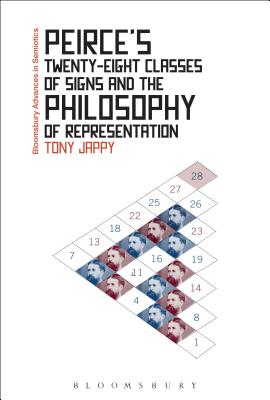The major principles and systems of C. S. Peirce’s ground-breaking theory of signs and signification are now generally well known. Less well known, however, is the fact that Peirce conceived these systems within a ’Philosophy of Representation’, his latter-day version of the grammar, logic and rhetoric triumvirate. In this book, Tony Jappy traces the evolution of Peirce’s Philosophy of Representation project and examines the sign systems within it.
Surveying the development of this Philosophy of Representation from its beginnings in the mid-1860s to Peirce’s last statements on signs between 1908 and 1911, this book draws out the essential theoretical differences between the earlier and later sign systems. Although the 1903 ten-class system has been extensively researched by scholars, this book is the first to exploit the untapped potential of the later six-element systems. Showing how these systems differ from the 1903 version, Peirce’s Twenty-Eight Classes of Signs and the Philosophy of Representation offers an innovative and valuable reinterpretation of Peirce’s thinking on signs and representation.
Exploring the potential of the later sign-systems that Peirce scholars have hitherto been reluctant to engage with, in the context of Peirce’s broader Philosophy of Representation, this book will be essential reading for everyone working in the field of semiotics.










